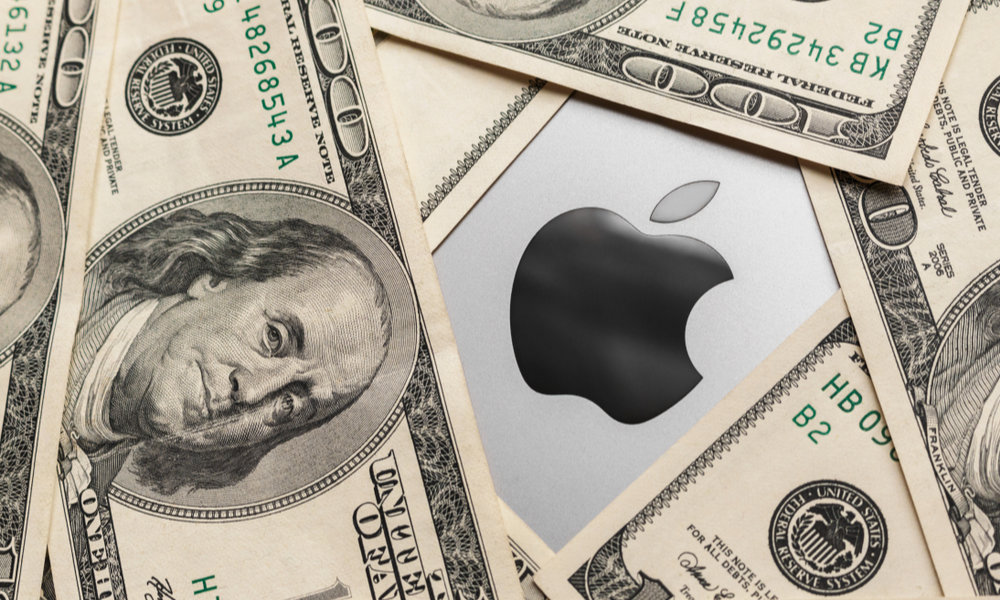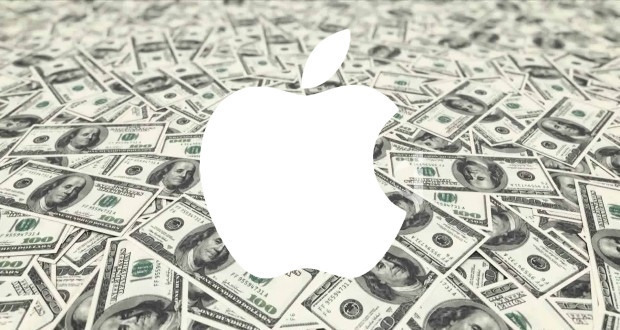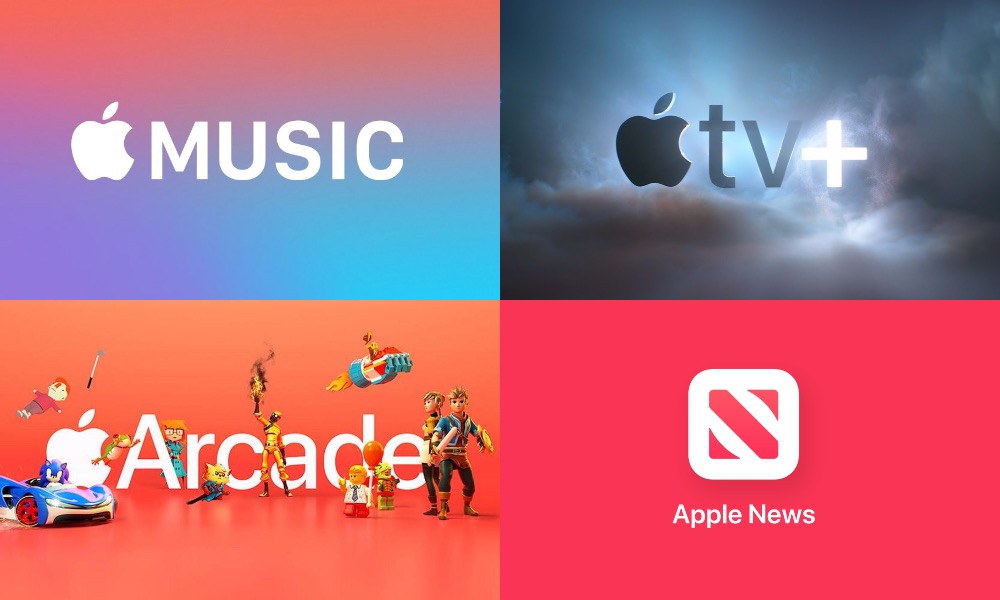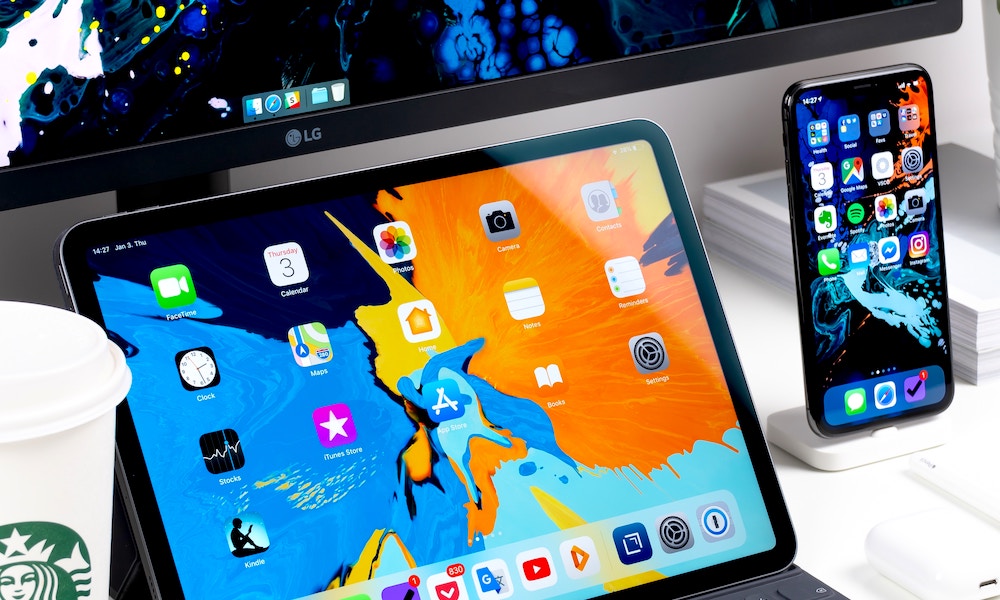7 Key Takeaways from Apple’s Q3 2020 Earnings Call
 Credit: Mykola Churpita / Shutterstock
Credit: Mykola Churpita / Shutterstock
Apple’s announcement of its Q3 2020 earnings yesterday may be one of its most significant in a long time, since it’s the first full quarter during which the company has had to deal with the novel coronavirus pandemic having shut down most of the world’s economy.
Investors were nervous enough about Apple’s Q2 2020 earnings after Apple candidly admitted that it would miss its targets due to the current crisis, although of course Apple CEO Tim Cook was quick to also add that Apple remained “fundamentally strong” and would definitely get through without any trouble.
Even so, the Q2 2020 earnings were a pleasant surprise, although since they spanned the period of January to March, most of the results also came from an era before the pandemic had encompassed most of the world — consider that Apple didn’t shut down any of its stores outside of China until the second week in March, which was basically the end of that quarter.
What Q3 2020 — April to June — would bring was much more uncertain, since over 400 Apple Stores remained closed when the quarter began, and Apple itself even refused to offer any guidance for the quarter, saying that there was no way it could do so in this time of uncertainty. However, what’s amazing is that even with most of Apple’s retail stores closed down for most of the quarter, Apple continued to show incredibly strong growth across the board, once again breaking records. Read on for 7 key takeaways from Apple’s latest earnings call on Thursday.
The Numbers
Apple’s revenue numbers would be remarkable under any set of circumstances, but in the very thick of a global health pandemic, they’re downright staggering, with the company reporting $59.7 billion in quarterly revenue — an increase of 11 percent from the same quarter last year, when nobody could have even predicted the onset of the COVID-19 crisis, and even a modest increase over the previous quarter’s $58.3 billion in revenue, which began in January, before most of the west had been impacted by the novel coronavirus.
- iPhone: $26.4 billion
- Mac: $7.1 billion
- iPad: $6.6 billion
- Wearables, Home, and Accessories: $6.5 billion
- Services: $13.2 billion
Keep in mind that this quarter began in April — after every Apple Store outside of China had shuttered its doors, and with the exception of only a single store in South Korea, most remained closed until early May, and it wasn’t until toward the end of the quarter that the majority of stores had reopened.
Surprising iPhone Growth
During its last earnings call, Apple’s executives candidly admitted that they expected to see iPhone sales slow down as a result of the health crisis, not to mention the normal slump in sales that happens every Q3 anyway as many customers hold off in anticipation of new fall releases.
However, the numbers surprised everybody, including Tim Cook himself, when Apple discovered that the iPhone actually still saw two percent growth over the same quarter last year — $26.4 billion versus $26 billion in Q3 2019 — with demand for the iPhone increasing in May and June. Cook attributed this to the “very successful” launch of the much more affordable iPhone SE, along with the economic stimulus packages that were available to many in the U.S.
In fact, according to a new report by market research firm Canalys, the iPhone was the only major smartphone vendor to see any growth this quarter. While Apple doesn’t release specific unit sales, Canalys estimates that the revenue actually translates to around 45.1 million iPhone units sold globally, making for a 25% year-over-year increase — a much higher jump than the mere $400 million revenue growth would seem to indicate, although of course this also points to most of the sales being focused on the iPhone SE.
Despite this, however, at only 44% of Apple’s overall revenue for the quarter, the iPhone still represented a smaller piece of the pie than it has in the past. Part of this is again due to the impending release of the iPhone 12 lineup, but it’s also clear that the iPhone is continuing to become more eclipsed by Apple’s strong performance in other areas like services, along with improved Mac and iPad sales as many people continue to work from home.
Double-Digit Services Growth
Apple continues its journey toward becoming a more services-focused company, and we see more indications of that with every quarterly earnings call.
This year saw a massive jump in services revenue over the year-ago quarter, bringing in $13.2 billion in revenue, an increase of almost $2 billion over Q3 2019, setting another record in this category, which accounted for 22% of all of Apple’s revenue during the quarter, and half as much as the iPhone generated.
Appel doesn’t offer specific revenue numbers for each services, however, during the call Tim Cook noted that the bulk of this growth came from the App Store, Apple Music, Apple TV+, and iCloud services. Although revenue from AppleCare and advertising was reportedly down, the rest more than made up for it.
Cook also shared that this means Apple has now achieved the goal it set in 2016 of doubling its services revenue by the end of 2020 — six months ahead of target.
Macs and iPads
Last quarter Apple did predict that Mac and iPad sales would increase as more users found themselves working and learning from home, and this appears to have been borne out in the numbers, which saw a big jump from the same time last year.
Mac sales revenue increased by almost 22% from the year-ago quarter, rising to $7.1 billion versus $5.8 billion in Q3 2019, while the iPad fared even better, with a staggering 31% increase in sales.
This is even more interesting when you consider that Apple didn’t release any particularly new groundbreaking products last quarter. While the iPad numbers were no doubt at least partially fuelled by Apple’s new 2020 iPad Pro, the rest of the iPad lineup hasn’t been updated since 2019, and even the newest iPad Pro wasn’t a significant jump over the 2018 model.
Further, the release of new 13-inch MacBook Air and MacBook Pro models with improved keyboards likely met some pent-up demand from those who had been trying to avoid the problematic butterfly keyboards, but it seems more likely that much of this was driven by demand for more capable computers and tablets by people working from home as well as students and families.
The iPhone is Officially Delayed
Apple didn’t mince words here: The iPhone 12 is officially not coming in September.
During the earnings call, Apple’s CFO Luca Maestri confirmed what we’ve been hearing for a while: the release of this year’s iPhone will be “slightly later than usual,” making it one of the few times that Apple has ever shared a product delay like this. In fact, Apple doesn’t usually even acknowledge that a new iPhone is coming at all.
Of course, since September and October span two different quarters, it’s important for Apple to be candid with its investors, if not its customers, since this will make for an impact on the Q4 2020 revenue. It’s the same reason that major Apple suppliers Broadcom and Qualcomm strongly hinted at iPhone delays to their own investors, since Apple’s component orders affect their bottom line as well.
This doesn’t mean Apple might not still choose to hold a September launch event as it usually does, but merely that the actual iPhone models themselves won’t go on sale until a few weeks later.
WWDC 2020 Was a Huge Success

It turns out that Apple’s decision to go entirely virtual with its Worldwide Developers Conference this year paid off well, garnering a much larger group of attendees than an in-person conference could have ever been capable of handling.
During the earnings call, Apple CEO Tim Cook shared that 22 million people tuned in from around the globe to take in the 72 hours worth of developer sessions that Apple had made available on video, plus 4,500 interactive person-to-person labs.
Apple’s Stock Split
No doubt in connection to Apple’s amazingly strong earnings, the company’s stock price also broke through the $400 ceiling in market trading, a 5% rise that landed it at around $406.
It’s actually a meteoric rise considering that Apple’s stock had dropped to $224 in late March over uncertainty from the global pandemic, but it’s been rising steadily ever since as Apple continues to report strong numbers across the board.
As a result of the higher stock price, Apple has also announced a 4-for-1 stock split that will be occurring later in August. This quadruples the number of individual shares that investors are holding in order to drop the price of a single share to a quarter of its original value — essentially like making change to get more smaller bills rather than fewer large ones. What it effectively does, however, is lower the bar for potential investors, since you’ll once again be able to buy a single share of Apple stock for around $100.
It’s actually the fifth time Apple’s stock has been split, with the biggest one — a 7-for-1 split — occurring in 2014. All of these splits combined mean that an investor who had bought one share of Apple stock back in 1986 for $0.58 would now own 224 shares at an approximate value of $22,400.






